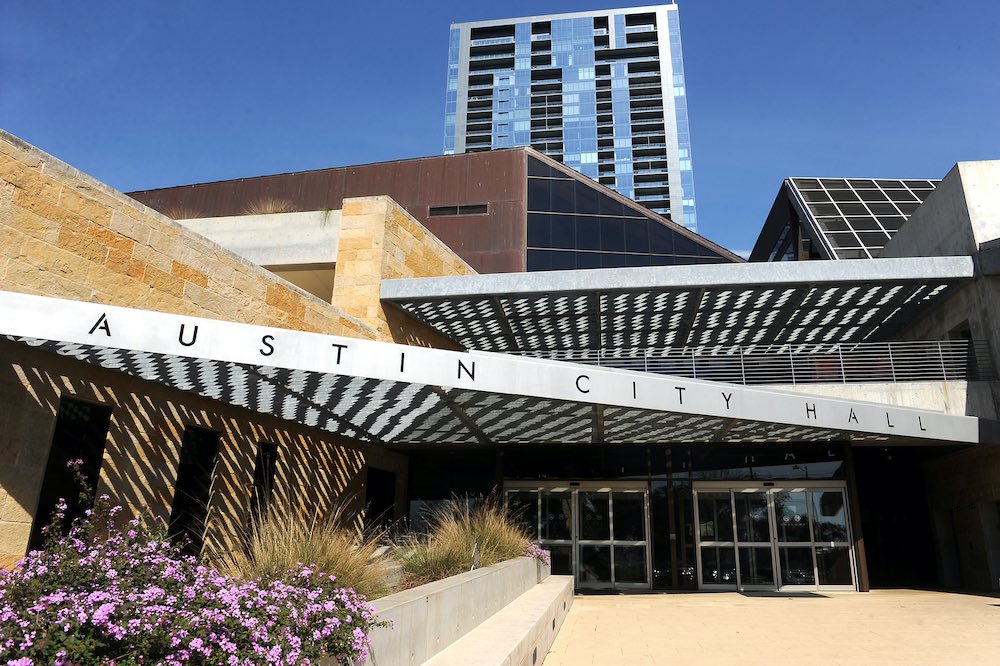Council Attitudes on Land-Use Change as Limits on Building Near Houses Are Eased
Council cuts compatibility with little opposition
By Austin Sanders, 4:05PM, Fri. Jun. 9, 2023

In the latest sign that the politics around land-use has dramatically shifted in Austin, City Council directed staff yesterday, June 8, to draft amendments to the Land Development Code (LDC) that would allow tall apartment buildings to develop closer to single-family homes than ever before.
Only two Council members voted against the resolution.
Such an outcome was inconceivable even just six months ago when Council approved a much more conservative change to these building restrictions known as compatibility rules. The 2022 LDC amendment now allows developers to capture additional height, but the rules apply differently depending on where the project would be built and whether or not the developer would provide subsidized affordable housing. The amended rules were written to have the biggest impact on “transportation corridors,” like those that currently have high transit service or will be served by Project Connect in the future. Most everywhere else in the city would still have compatibility rules triggering at 540 feet from a single-family home.
But the resolution authored by CM Chito Vela and opposed only by CMs Alison Alter and Mackenzie Kelly (Leslie Pool was off the dais for the day, traveling on city business) could reduce the trigger distance to 100 feet or less, all throughout the city, without any affordability requirements. (Vela’s original resolution was specific about this, and the Council discussion around the item used this figure, but an amendment from CM Ryan Alter tasks staff with bringing Austin’s rules “in line with peer cities.") Reducing the compatibility trigger distance from 540 feet to, at most, 100 feet, may seem drastic – but it would bring Austin into line with comparably-sized cities that have similar rules. According to staff in the city’s Housing and Planning Department, Austin’s limits far exceed the trigger distance found in peer cities (in Denver, for example, buildings can reach 70 feet of height at 40 feet from a single-family home).
Earlier this week, we covered part of Council’s motivation for further amending compatibility rules: the changes will simply allow for increased housing production, which, while booming in Austin, consistently fails to keep up with the city’s sustained and explosive housing demand. The rules are an especially prickly thorn in the side of builders who want to build tall multifamily housing along transportation corridors – i.e. the kind of housing that staff at the city, Capitol Metro, and the Austin Transit Partnership have repeatedly said is critical to the success of the transit overhaul promised by Project Connect – because these roadways often contain single-family homes close enough to trigger the height-restricting compatibility rules. Before Council approved a different program last year modifying compatibility rules for Vertical Mixed Use (VMU) developments, staff found that 66% of VMU-zoned sites would be unable to build to their maximum allowable height due to compatibility restrictions. Even among the 34% of VMU sites that could build to maximum allowable height, staff found that 36% were within 200 feet of a single-family home, so they would still be constrained by compatibility rules post-reform.
For Alter, the lack of a similar bonus program – in which developers are granted benefits like taller height or reduced compatibility rules in exchange for community benefits like subsidized housing – was a problem. “Housing units that are market [rate] alone will never create sufficient supply to meet the need,” Alter said, alluding to the value of bonus programs in a state that prohibits cities from requiring developers to include affordable housing in their projects. But you’d be hard-pressed to find someone else on Council, or among city staff, who is advocating for market rate units alone. Everyone agrees that a variety of tools are needed to combat Austin’s affordability crisis – bonus programs, land acquisition and social housing funded through public dollars, increased “by-right” development. At the same time, most CMs believe that because limitations on market-rate building have been too restrictive for too long, the rules have to change at an appropriate scale for the city to have any chance of becoming affordable to lower-income and working class people.
“I completely understand the goal of density bonus programs,” Vela said in response. “But ultimately they have to be calibrated appropriately,” meaning that the asks of the developer (e.g. number of affordable units and at what affordability level) have to be set at levels that make economic sense to the banks that finance housing development. That usually means profitability – housing is a market, after all, different in many ways from other markets but similar in that the people supplying the commodities within the market are generally doing so to earn a profit.
Early evidence from staff indicates that the compatibility reforms enacted last year may not be calibrated correctly – six months after the change, not one developer has applied for the “corridor compatibility” program. “It is doing absolutely nothing to provide subsidized housing in Austin,” Vela said. “I don’t think duplicating the same approach is going to be any more effective than the prior attempt.” (To be fair, HPD Director Rosie Truelove said one year is the typical look-back period staff uses to evaluate the effectiveness of a new housing program; it will be interesting to see at that point how many projects have applied for the compatibility bonus.)
Alter attempted to amend Vela’s resolution to tie the reduction in compatibility trigger distance to an affordability program, but the amendment failed 3-7. An affordability amendment from CM Ryan Alter did pass, however, but his approach directs staff to create an affordability bonus that applies beyond the new trigger distance staff recommends. So, if the new baseline compatibility trigger distance is set at 100 feet from a single-family home, developers could reduce the distance further by subsidizing some percentage of units at the project.
It was striking to see Alison Alter stand alone, in rhetoric if not votes, defending a concept in Austin land-use politics that until recently had been considered an immovable part of the status quo. More than the final vote on the resolution itself – approved 8-2-1 – the lopsided vote against Alter’s amendment, which would have likely had five or six votes in prior years, is perhaps the most concise representation of the recent, abrupt paradigm shift in Austin land-use politics.
Council will now break from meeting for six weeks while they get ready for budget season. Staff has been instructed to come back with an LDC amendment no later than Dec. 1.
Got something to say on the subject? Send a letter to the editor.
A note to readers: Bold and uncensored, The Austin Chronicle has been Austin’s independent news source for over 40 years, expressing the community’s political and environmental concerns and supporting its active cultural scene. Now more than ever, we need your support to continue supplying Austin with independent, free press. If real news is important to you, please consider making a donation of $5, $10 or whatever you can afford, to help keep our journalism on stands.
July 12, 2024
July 5, 2024
City Council, Council recap, compatibility, land development code, VMU, vertical mixed use, affordability, housing








